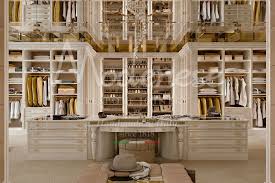The kitchen has always been the heart of the home, but in 2025, it’s beating with intelligence. As Artificial Intelligence (AI) and the Internet of Things (IoT) revolutionize modern living, kitchens are becoming smarter, more intuitive, and incredibly efficient. The future of cooking isn’t just about recipes—it’s about creating an ecosystem where every appliance works together to make life easier.
The Rise of Smart Kitchens: What’s Changed?
Gone are the days of manual cooking routines and static appliances. In 2025, smart kitchens are defined by:
- AI-enabled decision making – From suggesting recipes based on dietary habits to adjusting oven temperatures.
- IoT-powered synchronization – Appliances communicating with each other in real-time.
- Remote operation – Control your kitchen from your phone, smartwatch, or voice assistant.
- Sustainable technology – Energy-saving appliances that reduce waste and improve efficiency.
Core Components of a Smart Kitchen
| Smart Appliance | Key Features | Benefits |
|---|---|---|
| Smart Refrigerator | Scans contents, tracks expiry dates, suggests recipes | Minimizes food waste, eases meal planning |
| AI Oven | Automatically adjusts heat and cooking time | Prevents overcooking, improves consistency |
| Connected Dishwasher | Detects load type and adjusts water and detergent use | Eco-friendly and efficient cleaning |
| IoT Coffee Machine | Prepares coffee based on your schedule and preference | Wake up to the perfect brew |
| Voice Assistant Hub | Central control for all smart kitchen devices | Hands-free and intuitive cooking management |
Benefits of Integrating AI and IoT in Your Kitchen
Adopting smart technology offers more than just convenience:
- Efficiency: Save time through automation and quicker processes.
- Customization: Devices learn your habits and preferences over time.
- Energy Savings: Smart appliances optimize resource consumption.
- Safety: Real-time alerts for gas leaks, fire risks, or forgotten ovens.
- Inventory Management: Avoid running out of essentials thanks to integrated tracking systems.
Top Smart Kitchen Trends in 2025
1. AI Meal Planning & Nutrition Tracking
Smart fridges now analyze your food inventory, suggest meals based on dietary restrictions, and sync with fitness apps to monitor nutritional goals.
2. Hands-Free Cooking
Voice and gesture-controlled devices let you operate appliances without touching a thing—ideal for maintaining hygiene and multitasking.
3. Self-Cleaning Technology
Ovens and dishwashers with self-cleaning cycles reduce the burden of post-cooking cleanup.
4. Modular & Hidden Appliances
Minimalist kitchens now hide smart tech behind sleek panels—delivering both form and function.
5. Smart Faucets & Lighting
Touchless faucets with temperature presets and motion-sensor lights enhance the overall experience while conserving resources.
Getting Started: Building a Smart Kitchen
Here are some steps to begin transforming your space:
- Evaluate Your Needs – Focus on appliances that match your cooking lifestyle.
- Choose a Central Hub – Invest in a smart home assistant that can connect all devices.
- Ensure Compatibility – Buy appliances that work with common ecosystems like Google Home, Alexa, or Apple HomeKit.
- Upgrade Gradually – Start with one or two key smart appliances and expand over time.
- Maintain Cybersecurity – Use secure networks and update firmware regularly.
Challenges and Considerations
While smart kitchens are exciting, a few challenges come with the territory:
- Cost: Initial investment can be high, though long-term savings help offset it.
- Connectivity Issues: Devices rely heavily on a stable internet connection.
- Learning Curve: Some users may need time to adjust to digital interfaces.
What’s Next for Smart Kitchens?
Future-forward kitchens will see even more innovations:
- AI Recipe Coaching – Virtual chefs guiding you in real time with adaptive feedback.
- Robot Assistants – Mechanical arms or helpers to prep ingredients or stir sauces.
- Augmented Reality Cookbooks – Interactive guides projected onto kitchen surfaces.
- Food 3D Printing – Customized meals created layer by layer with precision.
Smart kitchens in 2025 are not just a novelty—they’re a game-changer for how we interact with food and our homes. By blending the precision of AI with the convenience of IoT, these kitchens deliver more than just meals. They offer time, comfort, and an elevated cooking experience that aligns with the fast-paced lifestyles of today. Whether you’re a tech enthusiast or a busy professional, investing in a smart kitchen is a step into the future of effortless living.

)
)
)
)




